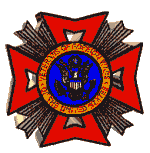

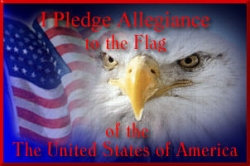
"Americanism is an unfailing love of country: loyalty to its institutions and ideals; eagerness to defend it against all enemies; undivided allegiance to the flag; and a desire to secure the blessings of liberty to ourselves and posterity."
This was the definition adopted during the late 1920's or early 1930's by the Commanders-in-Chief of the VFW and national commanders of four other veteran's organizations. But long before these leaders agreed on this definition, the VFW had founded its own Americanism program based on the principles of its constitution.
The program got its start under Captain Walter I. Joyce on March 1, 1921. As Chairman of the Committee on Americanization, Joyce embarked on an aggressive campaign to stir up patriotism across the United States. His early efforts were aimed at furthering the goals of the VFW Creed he had developed himself. This creed, adopted by the National Council of Administration in January 1921, declared that the VFW would:
- Do everything within its power to eliminate the hyphen in organizations composed of residents or citizens of the United States." [That is, that there should be no Irish-Americans, German-Americans, Italian-Americans, etc., only Americans.]
- That this organization endeavor to bring about the speaking of the language of our country at all times and in all places within the boundaries of the United States.
- That this organization emphatically favor publication of the newspapers of our country in the language of our country and positively discourage as an act of disloyalty the publication of our newspapers in the language of any other country or race.
- That we use our utmost efforts through legislation and other means to insist that the alien population of this country prepare to become citizens or prepare to leave the country until they change their minds, and furthermore that all aliens who for cause have been refused citizenship be deported at once.
- Resolved, that the above declared principles be spread broadcast by the VFW in carrying out its principles of Americanism."
This creed was distributed to members throughout the country, as well as to other military, fraternal, and veteran's organizations. Eventually, 150,000 signatures were obtained on a petition urging the adoption of this program to "Americanize America."
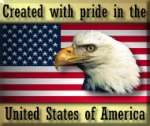 During the
early 1920's, a second Joyce campaign, to "Buy American," and a third, to take
"Un-American Textbooks out of the schools," followed closely behind the first.
Close to a million copies of Joyce's booklet, "Etiquette of the Stars and
Stripes," were also distributed to schools, posts, and other organizations during
this period.
During the
early 1920's, a second Joyce campaign, to "Buy American," and a third, to take
"Un-American Textbooks out of the schools," followed closely behind the first.
Close to a million copies of Joyce's booklet, "Etiquette of the Stars and
Stripes," were also distributed to schools, posts, and other organizations during
this period.
Joyce's crowning achievement was to lead the VFW in the campaign to have the "Star-Spangled Banner" proclaimed our national anthem. For years, the "Star-Spangled Banner" had been our unofficial anthem, and in 1916 President Woodrow Wilson had declared that it was, indeed, our national anthem. But the song could not be our official anthem until Congress approved a bill declaring it so.
At Joyce's request, New York Congressman Hamilton Fish introduced a bill into the 69th Congress to make the "Star-Spangled Banner" our national anthem, but to no avail. Fish reintroduced the same bill into the 70th Congress. Again no action was taken. On January 30, 1930, representatives of the VFW and more than sixty veteran and patriotic groups met in a conference in Washington. They urged passage of the Star-Spangled Banner Bill, then pending in Congress. Hearings on this bill, which had been introduced by Congressman Charles Linthicum of Maryland, were to begin the next day. At this hearing, VFW petitions bearing more than 5 million signatures were presented to the House Judiciary Committee. In addition, the VFW presented favorable endorsements from organizations totaling over 15 million in membership. Still, there were objections to the bill. Pacifists complained that the words were too military. Others said the tune was too hard to sing. To help overcome these objections, Joyce arranged for the U.S. Navy Band and soprano Elsie Reilly, a member of the Ladies Auxiliary to Post 824 of Washington, D.C., to perform the song for the committee. Her rendition must have been particularly stirring because the bill made it out of committee and was approved by the House on April 21, 1930.
In the Senate, the bill was held up in the Library Committee until February of the following year. Joyce and other members of the VFW Legislative Committee called on the senators opposed to the bill and secured their agreement not to block passage. Finally, the Star-Spangled Banner Bill made it to the floor of the Senate on March 3, 1931. This time it fared well. Just hours before Congress adjourned it was passed unanimously and signed into law by President Hoover.
In the mid 1930's, Victor Devereaux followed Joyce as Director of the Americanism program. As Devereaux instilled his own beliefs into the program, it gradually became more right wing. The new director guided the program's efforts to expose radical elements and subversive organizations operating inside our country. These activities reached their peak in World War II. During the war, the Department of Americanism cooperated with the F.B.I. in reporting subversive groups and acts of sabotage.
Devereaux also began the VFW Youth Activity program in 1935. The following year, the National Encampment passed a resolution requiring that a national director of Youth Activities be appointed and instructing each department and post to appoint a director of these junior activities. Through this program, many Sons and Daughters of the VFW units were formed. These groups reached a membership peak of 50,000 to 65,000 before the outbreak of World War II. Later, many sons' units were disbanded when their members joined the service, and the Junior Girls units were absorbed into the Ladies Auxiliary. Other youth projects included a National Softball Tournament, rifle shooting tournaments, Bicycle Safety Clubs, sponsorship of Boy Scout and Cub Scout troops, and a model airplane building club with over 50,000 members. So successful would these youth activities become that in 1945 youth activities were made into a separate program with their own director.
Another of Devereaux's accomplishments was to found a speaker's club whose members presented prepared speeches about America, veterans, youth activities, and other topics to groups and social gatherings across the nation. Through this club, 300 to 400 speakers each gave about a dozen speeches a year.
Upon the resignation of Devereaux in 1945, Mark Kinsey, an Iowa newspaperman and radio writer, became Americanism director. His primary contribution to the program was to compile, evaluate, and distribute information on Americanism and to speak for the VFW on Americanism matters. Under his direction, the Americanism Department prepared scripts that were used by 500 radio stations across the country, as well as articles that were published in 120 magazines and newspapers. He also set up a section to answer requests from organizations and individuals for information concerning VFW policies and general patriotic subjects. In 1947, the Americanism Department mailed over 5,600 "Speak Up for Democracy" scripts and press releases, 4,300 sets of articles and speeches, and 3,500 personal letters.
In 1949, the Americanism Department began a long fight to have May 1st designated as "Loyalty Day." In doing so, it hoped to counteract the messages of hate which the Communists broadcast during their annual May Day celebrations. For many years, the VFW struggled to get Congress to consider the bill. Finally, in 1954, Congressman and three-time National Commander-in-Chief James E. Van Zandt of Pennsylvania introduced a House Joint Resolution calling for the declaration of Loyalty Day. His bill passed the House, but not the Senate. Undaunted, he reintroduced the bill in 1955. This time, Congress passed the bill, but designated only May 1st of that year as "Loyalty Day." Not satisfied, the VFW continued its push to have May 1st of each year proclaimed as "Loyalty Day." This date was finally given official recognition in 1958 when Congress adopted Public Law 529 designating May 1st as Loyalty Day. Although never recognized as a major national holiday, Loyalty Day is still celebrated by posts, county councils, and districts all across this nation. To demonstrate their loyalty to our nation, its ideals, and its flag these units sponsor parades, hold dinners to honor wartime and peacetime heroes, and donate and ceremoniously replace worn and tattered flags flying in their community.
Shortly after the campaign for Loyalty Day was concluded, the Americanism Department succeeded in achieving another long-standing goal. For twenty years, the VFW had been working for the admission of Hawaii into the union; in fact, it had been the first patriotic organization to propose admission. On August 21, 1959, Hawaii became the fiftieth state.
Just as the VFW Creed had set the tone for the Americanism Department's activities in the 1920's, in the 1960's the Americanism Department was guided by a new manifesto. During the 1961 to 1962 year, the national Americanism committee approved the following Code of Ethics for The Veterans of Foreign Wars Fight Against Communism.
CODE OF ETHICS
- We will support the principles of freedom and justice, law and order upon which our country, the United States of America, is founded.
- We will support and seek to strengthen our institutions, public or private, which preserve, protect and defend our American freedoms.
- We will initiate steps and work with others to solve local problems by means of positive, constructive community action, no matter how small or large the problem.
- We recognize that it is our duty as loyal, active citizens to vote intelligently, based on careful consideration of issues and candidates, and to follow through by keeping elected officials informed of our views on all issues affecting the interests of all the people.
- We accept as a basis for action that Communists - whatever they profess at any given moment - are seeking by any and all means to subvert and destroy our ideals and national security. We will seek to defeat Communist objectives by the use of all legitimate means within the framework of our free society.
- We will not resort to gossip-mongering, name-calling tactics, or characterize any individual or organization as Communist on our own authority. We will regard such actions as threatening the basic freedoms which we are striving to defend.
- We will carry our fight against Communists and at their objectives on the basis of issues rather than personalities relying upon the persuasiveness of our position, rather than upon any form of intimidation or force, to bring success to our cause.
- We will test every issue two ways: (1) on the basis of whether action stemming from it will strengthen or weaken the free institutions and national security of the United States, and (2) on the basis of whether such action will strengthen or weaken the Communist cause in our country or abroad.
- We recognize that one of the greatest needs in our country today is education against Communism. We will initiate and support efforts to more fully enlighten all the people concerning Communist principles, objectives and techniques, and follow through by emphasizing the attributes of our American way of life.
- Our objective in supporting American ideals and in defeating Communist aims is not to act alone in order to win honor for ourselves; rather it is to work with like-minded citizens for the security, for the increased unity, and for the continuing improvement of our country.
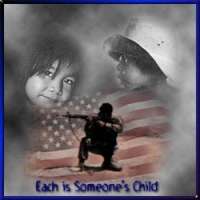 Throughout the 1960's, the Americanism
Department worked to foster support for our troops fighting Communism in Vietnam. With the
help of the Ladies Auxiliary, VFW members gathered and sent relief supplies such as food,
clothing, and medical supplies to our soldiers in Vietnam for distribution among the
Vietnamese civilians whose way of life had been devastated by the war.
Throughout the 1960's, the Americanism
Department worked to foster support for our troops fighting Communism in Vietnam. With the
help of the Ladies Auxiliary, VFW members gathered and sent relief supplies such as food,
clothing, and medical supplies to our soldiers in Vietnam for distribution among the
Vietnamese civilians whose way of life had been devastated by the war.
While it was supporting the players in the current conflict, the VFW did not forget those who had served in earlier wars. After learning that nowhere in France was there a memorial to World War I American Expeditionary Forces Commander and VFW member John J. Pershing, the VFW set about rectifying that oversight. In February of 1967, with another VFW member, Dwight D. Eisenhower, heading the memorial committee, an impressive statue sculpted by world-famous artist Felix W. de Weldon was erected. Because of the high regard the French veterans had for their American counterparts, the city of Paris approved $10,000 for landscaping the site.
As the 1960's gave way to the 1970's, the Americanism Department and its activities had become such an integral part of the organization as a whole that less and less distinction was made between what was a VFW project and what was an exclusive project of the Americanism Department. Certainly in reporting activities to the media, it was less cumbersome to say that something was done by the VFW, rather than as an Americanism Project of the Veterans of Foreign Wars of the United States. It was the same work, done in the same way, by the same people, only the credit was given in a different way. Inside the organization, however, the work was still accredited and reported and judged by the same people in the same way.
During the nation's bicentennial year, the VFW and its Ladies Auxiliary unveiled yet another monument - the "Torch of Freedom" monument. Located on the grounds of the VFW Washington Office in our nation's capital, this thirty-six-foot-high, three-sided marble and bronze sculpture features three-dimensional plaques recalling America's battles for freedom. At the top is a simulated flame which is lighted at night. The monument bears the inscription:
"Out of the past so great to build a greater future in honor and memory of the veterans of all America's wars who by their service kept the Torch of Freedom burning. This monument is dedicated by the Veterans of Foreign Wars and the Ladies Auxiliary to the VFW in honor of all who have served, their parents, wives and children."
Over the next years, recognition of those who had kept the Torch of Freedom burning remained a high priority of the VFW and its Americanism Department. At the VFW National Convention in August 1982, Jan Scruggs, president of the Vietnam Veterans Memorial Fund paid tribute to the VFW's part in helping the Vietnam Veterans Memorial become a reality. Scruggs recalled that in 1969 he recommended to Congress that a monument be erected to Vietnam veterans. When Congress backed away from the project, he elected to undertake the project himself. "I needed money to stimulate the necessary interest, and the VFW was the only organization to come forward with some money. Then I had to go to Congress to get two acres near the Lincoln Memorial. Cooper T. Holt, the Executive Director of the VFW Washington Office, got personally involved. Then the VFW had fund raising dinners and everywhere I went the VFW was right in the middle of it. They actually contributed $300,000. Even during the arguments over the style of the monument, the VFW stood with us."
During the Vietnam Memorial Monument Dedication on November 10 to 14, 1982, the VFW was well represented by its Jr. Vice Commander-in-Chief and Vietnam veteran Billy Ray Cameron of North Carolina. Cameron participated in all of the events and was one of the principle speakers for the actual dedication ceremony of November 23rd. Cameron told the 250,000 assembled for the dedication, "The VFW has always held, and will continue to hold to the ancient wisdom that says, ‘Hate War, Yet Honor The Warrior.'"
Two years later, on Memorial Day 1984, the VFW helped win another struggle for the Vietnam veterans. After years of advocating by the VFW and other veteran's organizations, the body of an unknown Vietnam veteran was interred in Arlington National Cemetery alongside his comrades-in-arms from the First and Second World Wars and the Korean War.
In 1989 and 1990, the VFW again manned the ramparts, this time in a war with the Supreme Court and the Congress over the "Desecration of the American Flag Issue." On June 11, 1989, the Flag Act of 1989-which prescribed penalties for the desecration or burning of the American Flag-had been declared unconstitutional in a 5:4 decision by the Supreme Court. The VFW announced it would keep the heat on Congress until it passed a constitutional amendment to resolve this controversial issue. In a hurried, but massive effort, the VFW and other patriotic organizations attempted to force Congress into calling for and ratifying a constitutional amendment. Although their effort came to naught, they vowed to keep the issue alive until some adequate protection is given our national banner.
In another emotional area, the VFW took a leading role in prompting Congress and the nation in remembering the virtually forgotten veterans of the Korean War. Putting its money where its mouth was, the VFW surpassed its fund-raising commitment by tendering $550,000 toward the Korean War Memorial Fund. The Ladies Auxiliary contributed an additional $97,000.
The top ten contributors to the Korean War Memorial were:
- Hyundai Motor America and U.S. Distributors: $1,204,000
- Veterans of Foreign Wars of the United States: $550,000
- Disabled American Veterans: $520,000
- Korean War Veterans Association: $500,000
- Paralyzed Veterans of America: $175,000
- VFW Ladies Auxiliary: $97,000
- AFLICIO Affiliates: $80,000
- American Legion: $75,000
- Ford Motor Company: $50,000
- Pohang Steel America: $50,000
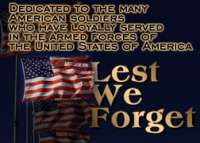 To drum up further recognition for those who
fought in Korea, the VFW helped convince Congress to pass a resolution honoring veterans
of the Korean War. The resolution declared that June 25, 1990, would be known as Korean
War Veterans Recognition Day. On that day, VFW posts worldwide offered special recognition
to those who had served in that worthy effort.
To drum up further recognition for those who
fought in Korea, the VFW helped convince Congress to pass a resolution honoring veterans
of the Korean War. The resolution declared that June 25, 1990, would be known as Korean
War Veterans Recognition Day. On that day, VFW posts worldwide offered special recognition
to those who had served in that worthy effort.
Obviously, the Department of Americanism is charged with a staggering responsibility. It is the conscience of the VFW, and, to a lesser degree, of the nation. The department takes direction from the Commander-in-Chief and the National Encampment, and on occasion remind both of what that direction should be. Americanism and the VFW are so closely intertwined that they cannot be separated.

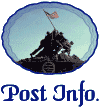


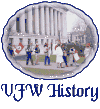
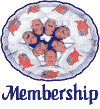
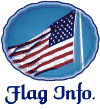

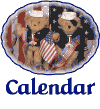
 E-Mail
E-Mail